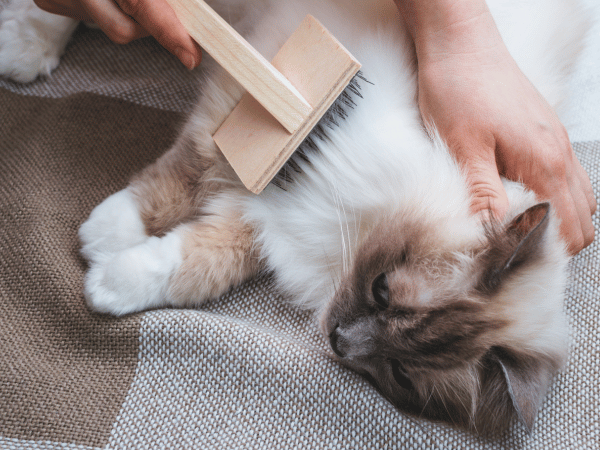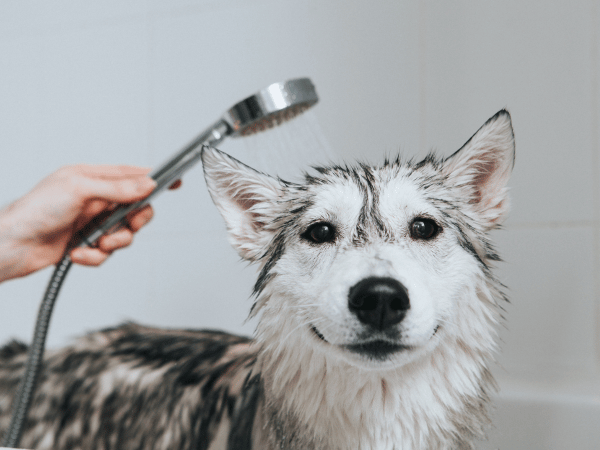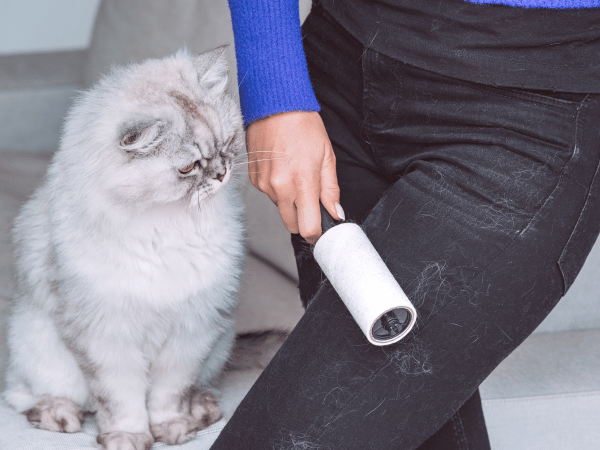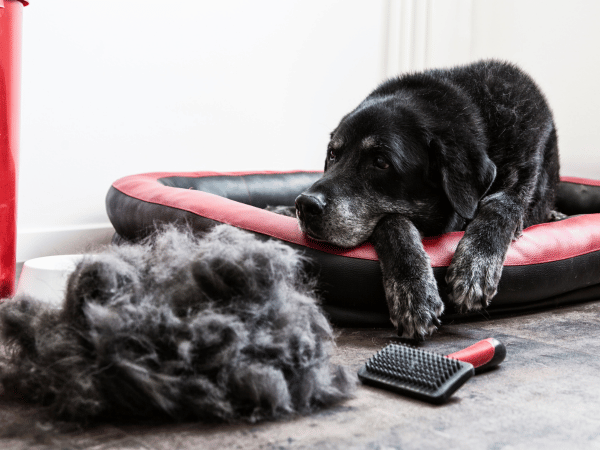As a pet lover, there’s nothing quite like snuggling up to your furry companion. However, one downside of owning a cat or dog is dealing with their shedding. It can be frustrating to find fur strands on your clothes, furniture, and all over your home. But why does shedding occur, and how can you manage it effectively? In this article, we’ll explore the reasons behind cat and dog shedding and provide you with practical tips to reduce it.
What Causes Cat and Dog Shedding?
Year-Round Shedding: Hair Growth Cycles
Firstly, it’s important to understand that shedding is a natural process for dogs and cats. They shed dead and damaged hair throughout the year. This shedding is part of a four-stage growth cycle:
- Anagen: New hair growth.
- Catagen: Hair stops growing because it’s at its full length.
- Telogen: Hair is neither growing nor shedding.
- Exogen: Active shedding.
Seasonal Shedding
In addition to year-round shedding, some pets, especially those with thick coats, are seasonal shedders. They tend to shed their undercoats more during spring and fall. As the days get longer during spring, the increase in daylight hours triggers the shedding of their winter coats. Conversely, shorter days in the fall prompt the shedding of old hair and the growth of new hair for winter. Seasonal shedding is common in dog breeds like collies, Siberian huskies, and German shepherds, as well as certain cat breeds like Russian blues, ragdolls, and American bobtails. It’s worth noting that some pets may also shed more during the summer due to warm temperatures.
Nutritional Deficiencies
Nutrition plays a vital role in a pet’s overall health, including the quality of their coat. Nutritional deficiencies involving protein, fat, vitamin A, vitamin E, and vitamin B7 (biotin) can lead to hair loss in dogs and cats. If you notice increased hair loss in your pet after changing their diet, it’s possible that the new food isn’t providing enough of these essential nutrients.
Shedding Due to Medical Issues
Certain medical conditions can cause excessive shedding in cats and dogs. Alongside shedding, pets may also experience symptoms such as red or irritated skin, sores, rashes, and constant scratching. Some common medical reasons for shedding include:
- Allergies in Dogs & Cats: Pets can be allergic to certain proteins in their diet, such as beef in dogs and fish in cats.
- Skin Issues & Parasites: Skin problems like mange, ringworm, ticks, and fleas can cause abnormal shedding and affect the skin’s condition.
- Systemic Issues: Conditions like Cushing’s disease, diabetes, hyperthyroidism, and hypothyroidism can impact the skin and coat, leading to excessive hair loss.
If you suspect that your pet’s shedding is due to a medical issue, it’s crucial to consult a trusted veterinarian for proper diagnosis and treatment.

Managing Cat and Dog Shedding
While shedding is a natural process, there are steps you can take to minimize it. Here’s a checklist for pet parents to help reduce shedding:
- Allergy Testing: Have your pet allergy-tested to identify any food triggers that may cause allergic reactions and increased shedding.
- Vet-Approved Diet: Feed your pet a high-quality, vet-approved diet that contains all the necessary nutrients to support a healthy skin and coat.
- Regular Brushing: Brush or comb your dog’s or cat’s coat frequently to remove dead hair and stimulate healthy growth. Dogs with double coats and long-haired breeds may require more frequent brushing.
- Regular Baths: Give your pet regular baths to remove dander and dead hair, preventing matting and dirt accumulation that can lead to increased shedding. Use a gentle shampoo that won’t dry out their skin.
- Regular Veterinary Wellness Exams: Schedule regular veterinary check-ups to detect and address any potential skin parasites, diseases, or systemic conditions that may contribute to hair loss.

Preparing Your Home for Shedding Season
Even with proactive measures, your pet will still shed to some degree, especially if they are seasonal shedders. To minimize the impact shedding has on your home, consider these tips:
- Furniture Covers: Protect your furniture with easily washable covers or blankets that can be regularly vacuumed to remove fur.
- Training: Train your pet to avoid certain furniture or use protective covers on areas where they are allowed.
- Regular Vacuuming: Vacuum your home regularly to pick up freshly shed hairs before they become embedded in upholstery. Robotic vacuums can be particularly helpful in keeping your floors clean.
- Sweeping with Hair-Attracting Materials: Use a microfiber mop or broom to sweep hard floors, as they attract and capture hair effectively.
- Lint Rollers: Keep lint rollers at hand to quickly remove stubborn pet hair from furniture and clothing.

Final Thoughts on Cat and Dog Shedding
As a pet owner, it’s important to remember that shedding is a natural process for cats and dogs. While you may not be able to eliminate it completely, these tips will help you manage shedding effectively. If you suspect that your pet’s shedding is excessive or abnormal, we recommend seeking veterinary advice to rule out any underlying health issues or nutritional deficiencies.
At Pet Lovers Diary, we’re here to support you every step of the way. If you’re concerned about your pet’s shedding, don’t hesitate to schedule an appointment with Sploot Veterinary Care, a trusted primary and urgent care veterinary clinic, available 365 days a year until 10 pm.
Till next time, we’re with you every pounce of the way!
